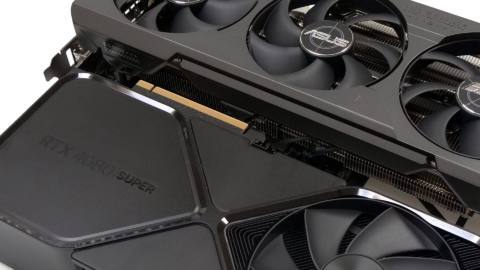
We have reached the end of Nvidia’s phased roll-out of new RTX 40-series cards, released under the ‘Super’ moniker – and what have we learned? Essentially, it’s a value play at the top and bottom of the new stack, with the RTX 4070 Ti Super landing a touch awkwardly in the middle. The RTX 4070 Super offered the biggest proportionate increase in compute power, delivering a nice performance bump over the vanilla 4070 for the same money, while 4070 Ti Super bumped up VRAM nicely, but delivered less of a frame-rate upgrade. RTX 4080 Super? There are some minor spec bumps, but the reality is that for the most part, you’re looking at nigh-on identical performance to the outgoing RTX 4080. You do, however, get a significant price drop – but once again, the feeling is that this is the maximum price the RTX 4080 should have had at launch and we’ve finally got it, 14 months on from the Ada launch.
The spec table below gives you some idea of how Nvidia has rebalanced the mid and upper range of the RTX 40-series line – but it illustrates the problem in beefing up the existing 4080. There’s little scope to increase the specs without moving onto the RTX 4090’s AD102 silicon. The firm has pushed as hard as it can with AD103 instead, meaning there’s the full complement of 10240 CUDA cores – but it’s a mere five percent increase in compute power over the standard RTX 4080. Augmenting this is the fastest GDDR6X modules Nvidia could find, but we’re still looking at just a 2.6 percent increase to memory bandwidth over the vanilla 4080.
What we’re left is reminds me very much of the days where Nvidia would launch a Titan product – say, the Titan X Pascal, and then months later release a GTX 1080 Ti – strategically shaved in some areas but fundamentally delivering nigh-on identical performance. We’ve done the benchmarks then, but as you’ll see, in most cases the RTX 4080 Super is one or two percentage points to the better (three to four if we’re really lucky!), but it’s basically the same, really. Some of the gains are so slight that singular benchmark runs could actually come in below RTX 4080 equivalents – perhaps down to minor variations in boost clock on a run-to-run basis. The bottom line? The specs are improved but this is fundamentally an RTX 4080 with a price cut and a paint job.






